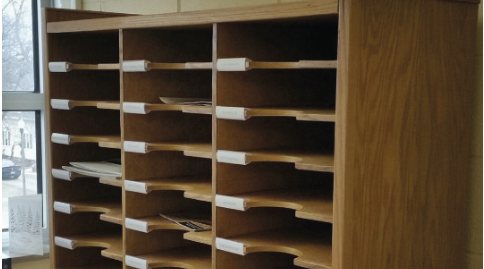by Steve Tuit and Abby Zwart
“PD DAY”
Those words on the school calendar may create a pretty broad range of feelings. Scheduled professional development can be a welcome break from the classroom, a chance to catch our breath in the middle of a busy school year. It can give us a chance to develop practical skills or focus on important big-picture work. But it can also feel like an interruption to meaningful work in the classroom—or just more work being heaped on our already full plates.
Looking around the room by the early afternoon of even a good professional development day may reinforce how varied our attitudes about them are. Some of us are still leaning forward in our seats, following every word. At the same table, someone else is slyly glancing at their phone. Someone in the back may actually be grading papers.
Despite the range of attitudes we sometimes feel about professional development, there’s no question that it’s important. Studies consistently show that high-quality teachers matter more to student achievement than any other aspect of schooling, and professional development expands our understanding of effective practices; allows us to respond to the changing landscape of issues and needs that we need to address in working with students, families, and communities; and assures that we’re aware of changes in standards or graduation requirements. In Christian schools, professional development also plays an important role in the development of the Christian community that we share with our colleagues, as well as the one that we’re trying to build for our students.
How can we make sure that the time we spend working to grow as Christian professionals is meaningful and engaging? This issue examines some answers to that question. After a broad look at trends in professional development as they impact Christian schools, we’ll consider how to build a culture of unity, growth, and collegiality from a variety of perspectives. We’ll end with a note of encouragement for new teachers—and anyone who feels like a new teacher once in a while.
This issue, we’ll each share one of our best PD takeaways. At one of the first “PD” days I went to in my first year of teaching, the presenter began by projecting this image on the screen:

The fact that I can remember that illustration probably means that it worked. But it also reminds me of the deeper goal of PD days: to remind us what it looks like to work together, pulling in the same direction, so that we can serve our students and fulfill our mission faithfully.
-Steve Tuit
In developing the theme and soliciting articles for this issue, I had hoped we would hear from some teachers or administrators about what they’re doing to develop and care for their staff not just as educators, but as humans. I imagined schools were finding creative ways to make teachers feel appreciated and healthy and rejuvenated—especially in the midst of these three extra-difficult school years. We didn’t get any bites for articles about that. I’m not sure if it’s just because no one thought to write about it, or if it’s because it’s not happening. I hope it is. I hope schools are providing lunch for their staff, asking students to write notes of thanks, and planning social time for teachers to remember that they like each other, not just that they work together. On that note, I’ll share my school’s best “PD” day this year. We started off together doing the usual PD business—this time it was some great diversity, equity, and inclusion training—but we broke at 11:30 and went bowling. The school had reserved lanes and gotten us all the right size shoes set aside and ordered pizza and pop. We just got to laugh and let off some steam and commune with coworkers we perhaps hadn’t caught up with lately. It was a good day.
– Abby Zwart
